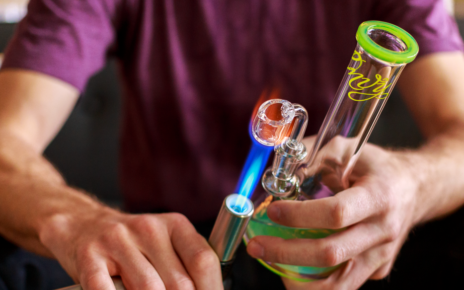Welcome to a comprehensive guide on breastfeeding positions and latch variations. As every new mother embarks on her breastfeeding journey, she quickly discovers that finding the proper position and achieving a good latch is vital to a comfortable and successful breastfeeding experience.
The Importance Of Breastfeeding Positions And Latch Variations
Breastfeeding is a way to nourish your baby and an opportunity to bond and connect with them. However, many mothers struggle with discomfort and challenges during breastfeeding due to incorrect positioning and latching techniques. That’s why understanding the importance of breastfeeding positions and latch variations is crucial for both the mother’s and the baby’s well-being.
Different Breastfeeding Positions
There are several breastfeeding positions to choose from, and finding the one that works best for you and your baby can significantly enhance your breastfeeding experience. Let’s explore some of the most common positions:
- Cradle hold: This is the classic breastfeeding position where you hold your baby in your arms, with their head resting in the crook of your elbow. This position allows for close eye contact and is suitable for most babies.
- Football holds: In this position, you tuck your baby under your arm like a football, with their head resting on your hand. The football hold is beneficial for mothers with a C-section or twins.
- Side-lying position: This position is great for breastfeeding while lying down. Simply lie on your side with your baby facing you and bring them close to your breast. It’s a comfortable position for nighttime feedings or when you need to rest.
Benefits Of Each Breastfeeding Position
Each breastfeeding position offers benefits, and what works for one mother may not work for another. Here are some advantages of different breastfeeding positions:
- Cradle hold: The cradle hold allows for a natural and comfortable position for both the mother and the baby. It promotes eye contact, bonding, and a relaxed feeding experience.
- Football hold: The football hold benefits mothers with larger breasts or babies with difficulty latching. It provides better visibility of the latch and allows for better control and support.
- Side-lying position: The side-lying position is perfect for mothers recovering from childbirth or those needing rest while breastfeeding. It promotes relaxation and can be helpful for mothers experiencing back pain.
Achieving A Proper Latch
A proper latch is crucial for successful breastfeeding. It ensures that your baby is effectively extracting milk, minimizing discomfort and nipple pain for the mother. Here are some tips for achieving a deep and practical latch:
- Positioning: Ensure your baby’s nose is level with your nipple, and their mouth is wide open. Bring them close to your breast, aiming for a deep latch.
- Support: Use your hand to support your breast and guide it into your baby’s mouth. This will help them take in as much of the areola as possible, ensuring a good latch.
- Lip and tongue movement: Watch for signs of proper latch, such as your baby’s lips flanged out and their tongue covering the lower gum. If you notice any discomfort or pain, gently detach and try again.
Common Latch Issues And How To Troubleshoot Them
Even with the best intentions, some mothers may encounter latch issues along their breastfeeding journey. Here are some common latch issues and tips to troubleshoot them:
- Shallow latch: If your baby is latching shallowly, they may be unable to effectively extract milk, leading to poor weight gain and nipple pain. Try repositioning them and ensuring a deeper latch.
- Various factors, including an incorrect latch or infection, can cause nipple pain. For guidance and support, contact a lactation consultant or healthcare provider.
- Engorgement Engorgement occurs when your breasts become full and swollen with milk. It can make latching difficult for your baby. Warm compresses, gentle massage, and expressing some milk before latching can help relieve engorgement.
Tips For Comfortable Breastfeeding Positions
Breastfeeding should be a comfortable experience for both the mother and the baby. Here are some tips to enhance your comfort during breastfeeding:
- Find a supportive chair. Use a comfortable chair or pillows to support your back and arms while breastfeeding. This will prevent strain and discomfort.
- Use a nursing pillow. Nursing pillows provide extra support and help position your baby at the right height and angle for optimal latching.
- Take breaks. Breastfeeding can be physically demanding, so take breaks and rest when needed. Listen to your body and prioritize self-care.
Supportive Tools And Accessories For Breastfeeding
There are several tools and accessories available that can enhance your breastfeeding experience. Here are some recommendations:
- Breast pumps: Breast pumps can help you express and maintain your milk supply. They are beneficial if you plan to return to work or need to bottle-feed your baby occasionally.
- Nipple shields: Nipple shields can be helpful if you’re experiencing nipple pain or if your baby has difficulty latching. However, it’s essential to consult a lactation consultant before using them.
- Nursing bras and tops: Invest in comfortable and supportive nursing bras and tops that make breastfeeding easier and discreet.
How To Transition Between Different Breastfeeding Positions
You may need to switch between different breastfeeding positions as your baby grows and develops. Here’s how you can smoothly transition between positions:
- Practice Familiarize yourself with different breastfeeding positions before your baby arrives. This will give you confidence and make it easier to switch positions when needed.
- Observe your baby. Pay attention to your baby’s cues and body language during breastfeeding. If your baby seems uncomfortable or restless, it may be a sign to try a different position.
- Take it slow. Gradually introduce new positions and allow both yourself and your baby to adjust. Finding the correct position that works for both of you may take some time.
Finding The Right Breastfeeding Position For You And Your Baby
Every mother and baby is unique, so finding the correct breastfeeding position is a personal journey. Experiment with different positions and trust your instincts. Remember that it’s okay to seek support from a lactation consultant or breastfeeding support group if you encounter challenges.
Conclusion: Empowering Mothers Through Breastfeeding Positions And Latch Variations
Breastfeeding is a beautiful journey that can be made even more special by finding the correct breastfeeding positions and achieving a proper latch. By exploring the various positions and latch variations, you can unlock a world of comfort and enhance your breastfeeding experience. Remember to be patient with yourself and your baby, and seek support when needed. Happy breastfeeding!





